MTN launches its biggest Black Friday yet MTN South Africa has kicked off its 2025 Black Friday campaign with a major expansion of deals…
HTC One M8 review: old name, new tricks
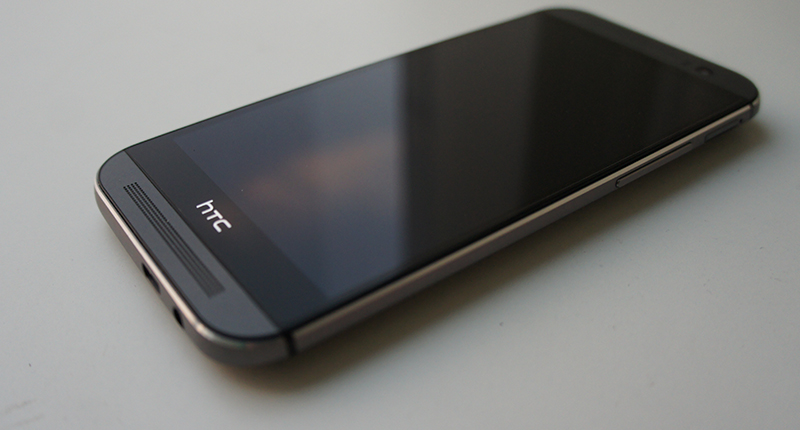

HTC One was one of the most beautiful and sought-after smartphones from last year which taught us to focus on overall experience more than the hardware specifications. HTC tried to break the norms with an UltraPixel camera and BoomSound speakers. HTC One M8 has been recently released as a successor to the HTC One but does it provide enough to be considered a worthy upgrade? Let’s find out.
Unrivalled looks
HTC has always been the only brand which could challenge Apple in terms of product design. Most of the time, it even wins these battles. HTC has still decided to place the power button on the top of the device which makes it harder for the fingers to reach. It is accompanied by an IR Blaster. The volume rocker and microSD card slot are on the right, while the Nano-SIM card slot is on the left. The bottom of the device houses the headphone jack and a microUSB port. The front of the device is covered by the screen, stereo speakers, front-facing camera and a bunch of sensors.
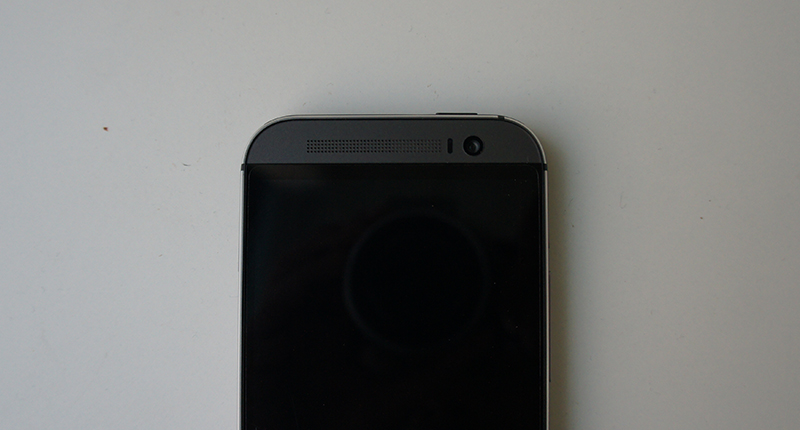
HTC One M8’s unibody shell is made up of 90% metal as opposed to last year’s 70% metal usage. This makes the device heavy even though it stays as slim as the earlier model. The overall design is completely similar to that of the HTC One with some improvements on the ergonomics. Thanks to slimmer and curved edges, it is better to hold in the hands and feels slightly less slippery. The device feels as if it can take a bump or two without having any effect on its design. Overall, it is quite a looker and one of the best designed smartphones of the year (which doesn’t skimp on toughness either).
Flawless display
The 5-inch SLCD3 display panel is similar to the HTC One’s. It is a full HD 1080p screen with over 440ppi and uses Gorilla Glass 3. There were no issues in brightness or viewing angles. The display exhibits extremely rich black levels and contrast as far as LCD panels go. Measurements aside, the display panel is one of those flawless displays, similar to those used in LG G2 and iPhone 5S.
An uninspiring camera
If you remember, HTC tried to steer away from the megapixel war with its UltraPixel camera sensor. But that didn’t work out very well. Still, HTC has retained the same 4MP UltraPixel camera (1/3 inch) with 28mm autofocus lens and F/2.0 aperture. Unfortunately, the much appreciated OIS lens has been removed for unknown reasons.
The only addition in terms of camera hardware seems to be the “Depth Sensor” and a dual LED “Smart Flash”. Also, HTC One M8 might be the first smartphone in the world which has a front camera with higher resolution than the rear camera.
It has a 5 MP front-facing camera with a F2.0 wide-angle lens, perfect for a selfie crazy world. Both the camera units, front and back, can capture videos in full HD resolution. It can’t record 4K videos but I don’t think I missed it as 4K displays aren’t mainstream yet. Most don’t have a 4K monitor or TV at home to enjoy those high-resolution videos. Also, 4K videos are a hog on storage space for even a 10 minutes video clip.
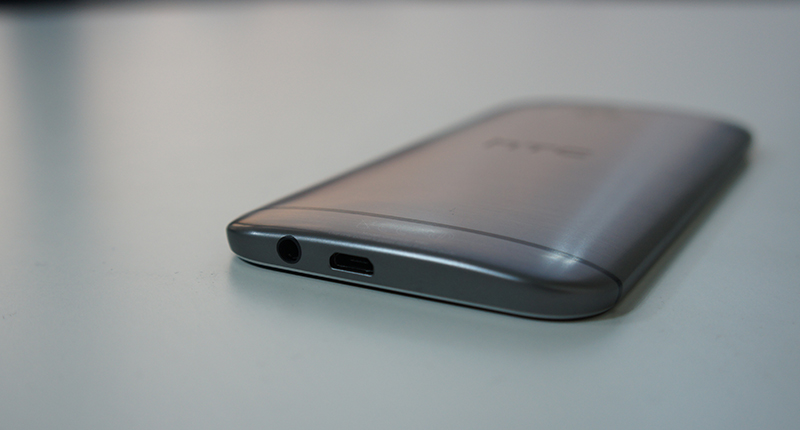
The depth information in the images is used to distinguish between the subject and the background. HTC has a special UFocus mode in its image editor which gives the images a bokeh (background defocus) effect. But almost every other brand achieves a similar effect to its images without an extra sensor. Nokia Refocus app clicks a series of images with different focal lengths and merges them into a single image. Sony’s Background Defocus camera mode takes two different images to achieve the same but you can’t change the focus points later.
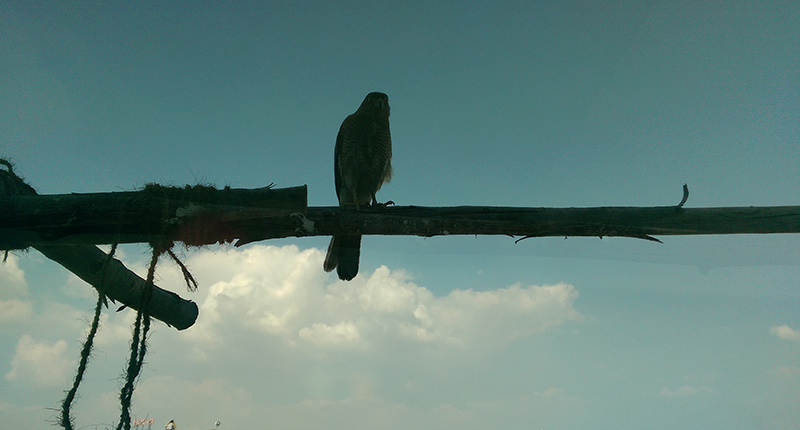
So why is HTC using an extra hardware for the background defocus effect? I’ve found out that other smartphones take at least 3 to 4 seconds to click such images but HTC can do that in milliseconds, thanks to its depth sensor. Also, you don’t need to activate any mode in the camera interface to achieve the background defocussed images. Almost every image clicked with the HTC One M8 has depth information in it so you can choose to keep either the subject or the background in focus, as per your needs. Sometimes, the edges of the subjects get blurred. I think HTC needs to iron out this issue in the UFocus mode. There are a bunch of effects as well such as 3D effect, zoom blur, sketch, cartoon and colorise. These effects are applied to the background while the subject is kept unchanged.
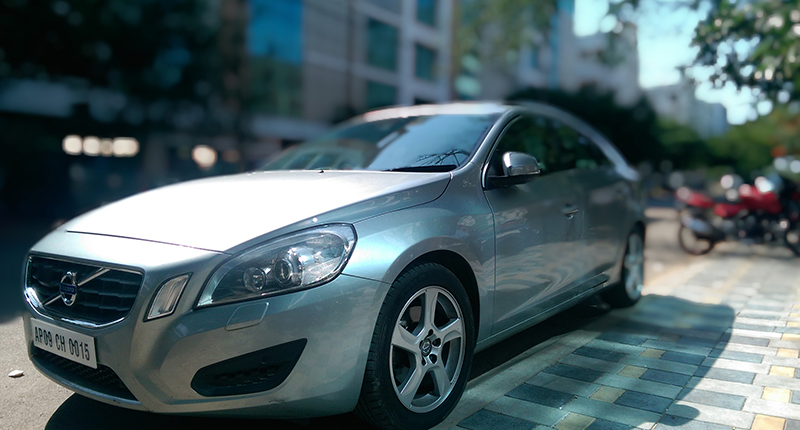
The One M8 has one of the best camera UI’s that I’ve used in the past year. The UI consists of on-screen shutter button, shortcut to camera roll and a dedicated button to change the camera modes. It comes with 6 modes; camera, video, zoe, selfie, dual capture and Pan 360. Clicking the 3 dot options button will give you access to scene modes, ISO, exposure, white balance and effects. You can change white balance, ISO, shutter speed and focal length in “Manual” mode with an interface very similar to that of Nokia Pro Camera.
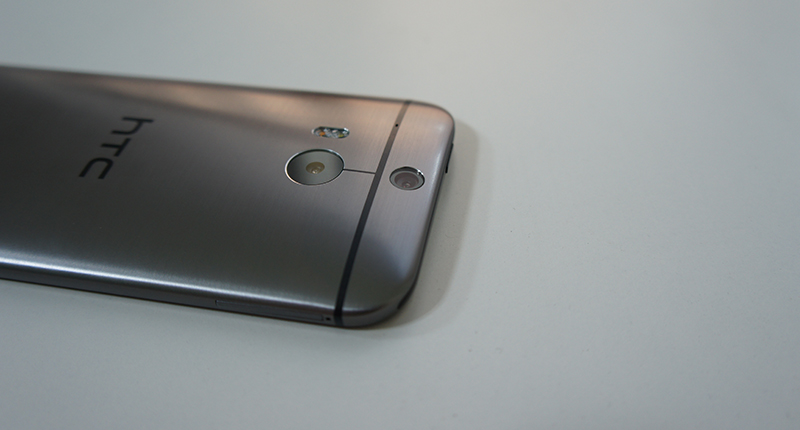
Quality wise, the images shot with the HTC One M8 are not inspiring at all. Not only are the images short on resolution, they lack detail when compared with the ones like Xperia Z2, Galaxy S5 and Lumia 1520 The noise is kept well under control though. But the lack of OIS shows its shortcomings in low light conditions as the images are not quite as sharp and lack details when compared to the HTC One. The skin tone in the images captured with the “Smart Flash” isn’t as accurate as advertised. The videos are captured well and are full of detail. But are comparatively shakier in comparison due to lack of OIS.
Excellent performance
It is powered by a two-generations newer Snapdragon 801 SoC (2.7 GHz) and 2GB LP-DDR3 RAM. The Snapdragon 801 is a minor upgrade to the Snapdragon 800. It consists of four Krait 400 CPU cores and Adreno 330 GPU. HTC has brought back the microSD card slot with the One M8. It can support microSD card slots of up to 128GB storage capacity, thanks to the eMMC 5.0 interface support in Snapdragon 800 chipset. HTC is offering 50GB of Google Drive cloud storage free for two years.
| HTC One M8 (2014) | Samsung Galaxy S5 (Exynos Octa) | Apple iPhone 5S | |
| GeekBench 3 (Single Core/Multi Core) | 901/2423 | 908/2953 | 1412/2556 |
| GFXBench 3.0 (1080p Manhattan Offscreen) | 11.1 FPS | 8.6 FPS | 13.2 FPS |
| SunSpider 1.0.2 (Lower Is Better) | 570 ms | 428 ms | 426 ms |
Benchmarks aside, the HTC One M8 felt extremely fast and fluid in my daily usage. The device performs impeccably and there are no lags whatsoever even in heavy tasks like screen mirroring or gaming. Similar is the case with all the flagship devices released this year. It crosses the 30FPS mark in the GFXBench T-Rex 2.7 HD (1080p onscreen) which is a great achievement in itself.

In terms of connectivity, the One M8 is equipped with HSPA+ (42Mbps HSDPA and 5.76 Mbps HSUPA), dual-band Wi-Fi ac/b/g/n, Wi-Fi Direct, DLNA, Miracast, Bluetooth v4.0 and NFC. Wired connections include microUSB v2.0 with USB OTG and USB Host functionality. It also doubles up as MHL post for screen mirroring. There were no signal drop issues in the two weeks when I used it. The HTC Sense TV app uses the IR port to allow you to use the HTC One M8 as a remote control for various appliances and electronics such as TV, Home Theatre System, Set-Top Box, etc. It worked well with my Sony LCD TV and Tata Sky Plus set-top box. The device was able to send the signals even when I was about 15 feet away from the TV.
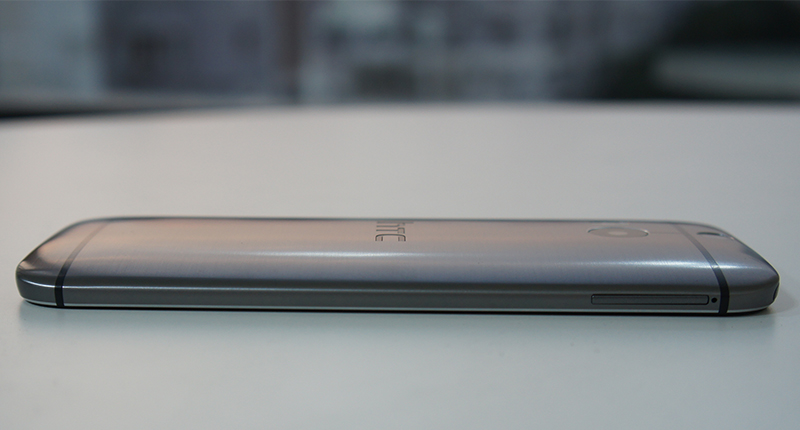
There are BoomSound 2 stereo loudspeakers on the front which HTC says have improved by over 30% compared to last year’s BoomSound speakers from the HTC One. I noticed that they are now slightly louder which is a great improvement considering the fact that the HTC One was already the best sounding smartphone of last year. HTC has to improve because competitors like Sony Xperia Z2 are now equipped with stereo speakers. Although there is no equaliser, audio quality through headphones was extremely rich and quite loud.
A polished Android UI
The One M8 comes preloaded with Android 4.4 Kit Kat and incredibly, the HTC Sense 6.0 is one of the most polished Android interfaces I have ever used. This new version of HTC’s custom UI comes with new features and improved usability. You can swipe up to unlock the device while the screen is turned off. Swiping down will activate a voice calling feature, while swiping left and right will take you to BlinkFeed or home screen. You can also wake up the display by double tapping the screen while it is turned off. Finally, HTC has moved to on-screen buttons with the One M8.

BlinkFeed is a news reader app in a full screen widget like appearance. You can configure it to show feeds from various news sources and even social networks. BlinkFeed was introduced last year but many people complained that it couldn’t be turned off. HTC has listened as you can now completely remove the BlinkFeed feature from the home screen. There is a dedicated Kids Mode and Car Mode. Themes, wallpapers, ringtones and notification sounds can be customised. The device can stream music from DLNA servers as well. The inbuilt music player can automatically download lyrics, album art and artist images.
A satisfyingly long battery life
The One M8 is equipped by a 2600mAh non-removable battery. One of the most important things that Qualcomm has improved in Snapdragon 800 and Snapdragon 801 is its ability to sip power rather than gulp it when compared to Snapdragon S4 Pro and Snapdragon 600. This reflects well in the battery endurance of the One M8. It survived a complete day (24 hours) with more than 4.5 hours of the screen always being on.
I used it mostly for browsing the web, which I think is one of the most battery hogging tasks apart from gaming because the device would be constantly sending and receiving data and its screen would be in active use. It even comes with Power Saving and Extreme Power Saving modes which would extend the battery life considerably. HTC says that the One M8 would last 15 hours with just 5% battery charge if the Extreme Power Saving mode is activated.
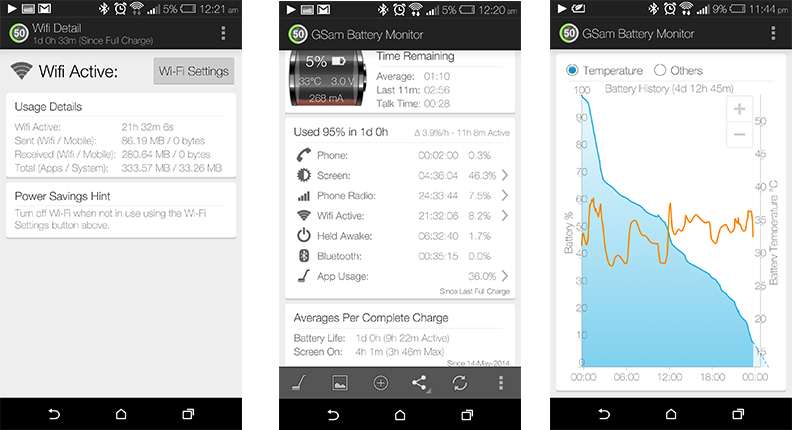
Verdict: Priced at around US$780 (INR 45,500), the HTC One M8 comes with the latest version of Android, the most polished UI yet, great performance and long battery life. But its camera lets the whole package down, especially if you are a pixel peeper. It is much better than the Galaxy S5 in the overall experience. If you own and HTC One, the One M8 is definitely worth an upgrade. If you have money to spend and you don’t care about the megapixel ratings of your camera, you should buy the HTC One M8. Another year, another excellent phone from the under-appreciated HTC.

